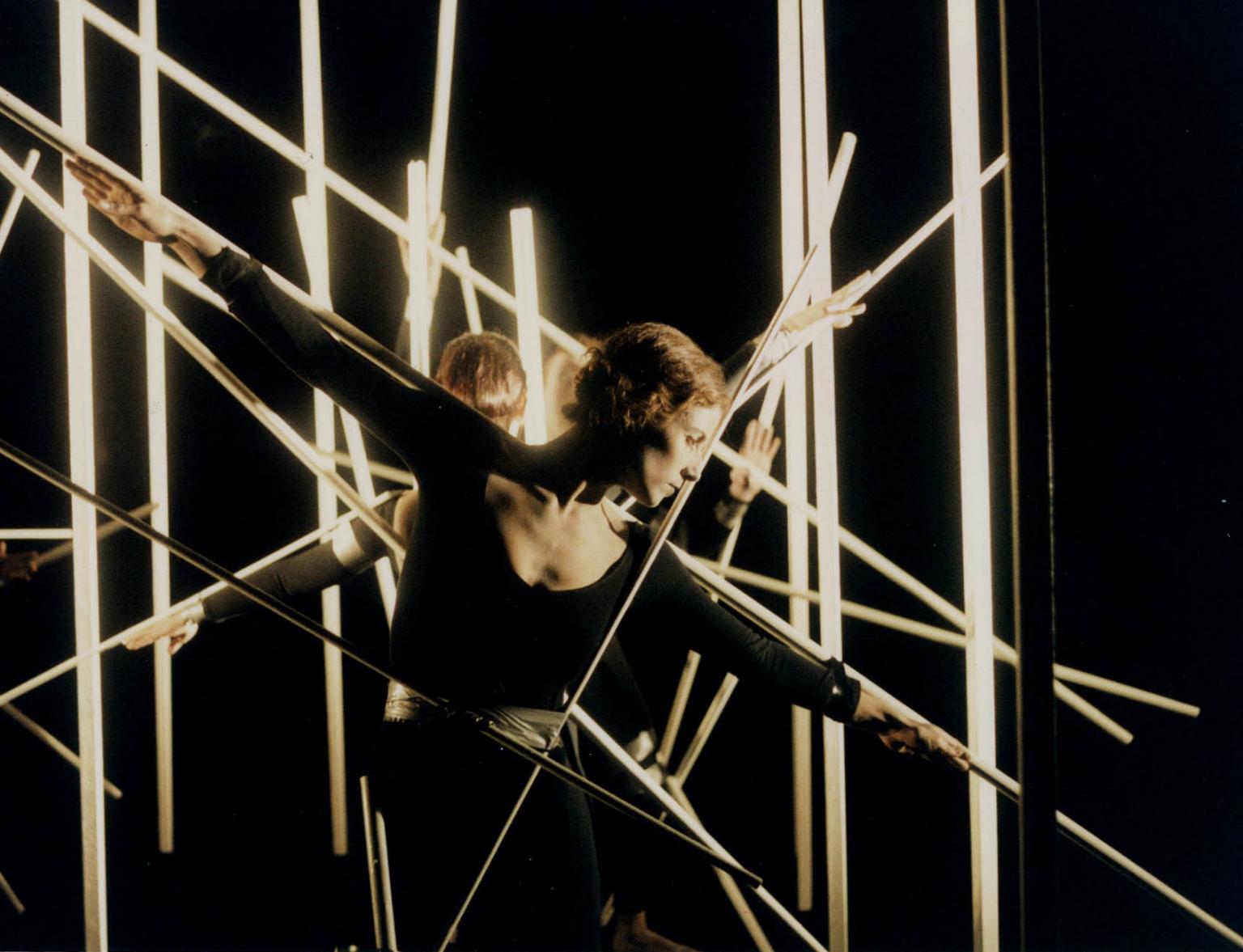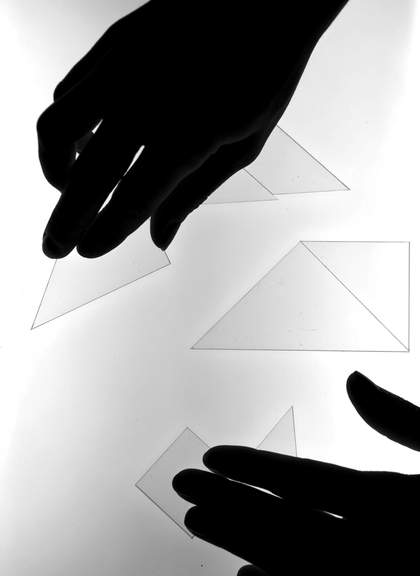In Magenta, Emerald, Lapis, Anna Barham uses puzzles to explore the changing structure of words and how meaning is made and modified
Barham builds words using a tangram puzzle (a square cut into seven pieces that can be re-formed in various ways). She rearranges the tangram pieces above a light box until they become recognisable as letters. By doing this, Barham demonstrates how easily symbols can be transformed, and meanings changed.
This process of reordering and transforming poetic texts is a recurring theme for the artist. She has made many works with anagrams – puzzles that involve rearranging the letters of a word or phrase to produce a new one. This stems from her interest in the idea of revealing a word’s ‘unconscious’ meanings by exploring its associations. Barham says she uses word play to ‘set up a situation where meaning has to be actively constructed by the viewer.’
Barham’s fascination for anagrams began with her interest in the archaeological excavations of the ancient Phoenician city of Leptis Magna. The city is located on the coast of modern-day Libya. Stones and artifacts from several ancient buildings were plundered from the site by a British Army officer in 1816 and used to build an elaborate folly at Windsor Great Park. The remnants of the ruins had been taken out of their original context and remade with a different meaning. This echos the way meaning changes when rearranging the letters of one word to make another. One anagram of LEPTIS MAGNA is PLANT IMAGES. In Magenta, Emerald, Lapis, Barham spells out a poem written from the letters of REPLANTED IMAGES and the work manifests how language is endlessly restored and reconfigured
Art in this room


